Call of conductors. Ohm's law for a repeated call. Electrodestructive force
Electric strum. Ohm's law. Later that parallel z'ednannya conductors.
How to place an insulating conductor in electrical field then on the free charge q the conductor has a force. This process will be completed only if the electric field of the charges is good, which bleed on the surface of the conductor, I will compensate for the outside field. The resulting electrostatic field in the middle of the conductor is equal to zero.
However, the conductors for the singing minds can be blamed without interruption in the order of the rukh free noses of the electric charge.
The uninterruptedly ordered ruh charge is called an electric jet.
For straight ahead electric struma taken directly to the flow of positive free charges. For the foundation of an electric strum at the conductor, it is necessary to create a field for the new electric field.
Kіlkіsnoy miroy elektrichesky struma є struma force I.
scalar physical quantity, equal to the charge Δq, which is transferred through the cross section of the conductor for an hour interval Δt, up to this interval is called the power of the electric jet. (Fig. 1.7.1)
DIV_ADBLOCK15">
The nature of outside forces can be different. In galvanic cells or batteries, stench is blamed on the back of electrochemical processes, in generators fast strumu third-party forces blame the conductors for an hour at the magnetic field. Dzherelo strum in the electric lance plays the same role as the pump, which is necessary for pumping the fluid in a closed hydraulic system. Under the influence of third-party forces, the electric charge collapses in the middle of the jerela strum against the forces of the electrostatic field, which is why a constant electric strum can rise in a closed lance.
When electric charges are moved along the lance of the steady stream, third-party forces, which develop in the middle of the struma, beat the robot.
The physical quantity that contributes to the work of Ast of external forces when the charge q moves from the negative pole of the jerel struma to the positive one up to the value of the charge, is called the electro-destructive force of the jerel (EPS):
DIV_ADBLOCK17">
The value of U12 is usually called the spring force of the lancet 1–2. In different homogeneous plots, the voltage of different potentials is: U12 = φ1 - φ2.
The German physicist G. Ohm in 1826 experimentally established that the strength of the struma I, flowing along a homogeneous metal conductor (that conductor, in which not
external force), proportional to the voltage U at the ends of the conductor:
![]()
de R=const.
The value of R is accepted to be called electric support. A conductor, which can be an electrical opir, is called a resistor. Dane spіvvіdnoshennia deviates Ohm's law for a homogeneous lot of lancer:
the strength of the struma at the conductor is directly proportional to the given tension and is inversely proportional to the support of the conductor.
In CІ, Om serves as the unit of the electric support of the conductors. Opirom in 1 ohm maє taku lansyug’s plate, in yakomu with a pressure of 1 vinikaє strum with a force of 1 A.
Explorers who follow Ohm's law are called linear. The graph of the strength of the struma I and the voltage U (such graphs are called current-voltage characteristics, abbreviated VAC) is a straight line that passes through the cob of coordinates.
For a lot of lancers to avenge the EPC, Ohm's law is written in this form:
IR = U12 = φ1 - φ2 + ɛ = Δφ12 + ɛ.
Tse spіvvіdnoshennia is accepted to be called the zagalnennym Ohm's law and Ohm's law for the non-homogeneous lantsyug.
On fig. 1.7.2 shows the closures of the lances of the post-strum. Lansyug's yard (CD) is homogeneous.

Baby 1.7.2.
The closure of the lancet of the post-strum.
Ohm's law for the full lance: the power of the strum in the full lance is equal to the electric breaking force of the dzherel, divided by the sum of the supports of the homogeneous and non-homogeneous lancers of the lance.
DIV_ADBLOCK19">
(R<< r), тогда в цепи потечет ток короткого замыкания
The strength of a short strum strum is the maximum strength of a strum, which can be taken into account as a given dzherel with an electrically destructive force and an internal support r. At the dzherel with a small internal support, the strum of a short flicker can be even greater and more likely to ruin the electric stake or the dzherel. For example, in lead-acid batteries, which are found in cars, the short-circuit power of the struma can be hundreds of amperes. Particularly unsafe short hums in lighting lines, like live in substations (thousands of amperes). In order to hide the ruins of such great strums, zapobіzhniks, or special automatic weapons, are included in the lancet.
In a number of vibrations, in order to intimidate the unsafe values of the force of the strum, a short fading to a dzherel is sequentially added to a kind of sound opera. Todi opir r dorіvnyuє sumі the internal support of the dzherel and the external support, and at short flicker the strength of the strum does not appear supermundanely great.
If the outer lance is open, then Δφba = – Δφab = ɛ, so that the difference in potentials at the poles of the open battery is good for EPC.
The current navantazhuvalny opir R is noted and the strum I flows through the battery, the potential difference at the її poles is more Δφba = ɛ – Ir.
On fig. 1.7.3 gives a schematic representation of the dzherel of a steady stream with EPC equal and internal support r in three modes: “idle run”, a robot for navigating that short-circuit mode (short circuit).
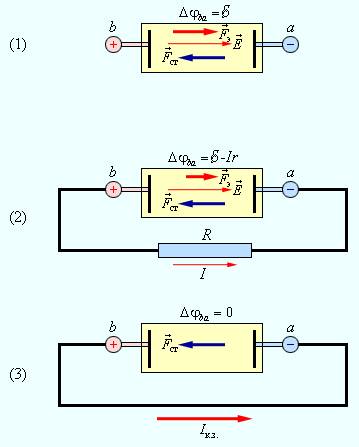
Baby 1.8.3.
Schematic representation of the dzherel of the standing strum: 1 - the battery is disconnected; 2 - the battery is shorted to the outer terminal R; 3 - short-circuit mode.
For vimiryuvannya naprug і strumіv electric lancers post-strum vikoristovuyutsya special accessories - voltmeter and ammeter.
Voltmeter of appointments for vimiryuvannya raznitsі potencialiv, applied to yogo terminal. The wines are connected in parallel with the division of the lancet, on which the vimiryuvannya of the potential difference is carried out. Whether a voltmeter may be some kind of internal opir RB. In order for the voltmeter not to make a significant change to the sub-line of the strum when it is connected to the wired lance, the inner support must be greater in the same time with the support of the lance-shaped pole, to some kind of connections. For the lancer shown in Fig. 1.7 4, which is written in the mind: RB>> R1.
Tsya umova means that the strum IB = Δφcd / RB, which flows through the voltmeter, less than the strum I = Δφcd / R1, which flows through the distance of the lance, which is tested.
Shards in the middle of the voltmeter do not emit external forces; It can be said that the voltmeter measures the voltage.
The ammeter of appointments for vimiryuvannya of force of a lanceug. The ammeter is switched on sequentially in the opening of the electric lance, so that it passes through the entire strum, which is destroyed. The ammeter can also be used as an internal reference RA. On the view of the voltmeter, the internal opir of the ammeter can be done small, aligned with the outer support of the entire lansyug. For the lancer on small. 1.7.4 Ammeter test is due to the minds of RA<< (r + R1 + R2),
so that when the ammeter is turned on, the strum at the lancius does not change.
Vimiryuvalnі prilad - voltmeters and ampermeters - there are two types: arrow (analog) and digital. Digital electrical appliances and folding electronic appliances. Sound digital devices for greater accuracy of the world.
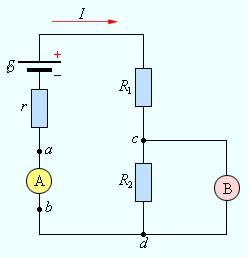
Baby 1.7.4.
The inclusion of an ammeter (A) and a voltmeter (B) in an electric lance
Later that parallel z'ednannya conductors.
Conductors in electric lances can connect in series and in parallel.
With the last connection of conductors (Fig. 1.8.1), the strength of the struma is the same for all conductors: I1 = I2 = I.

Baby 1.8.1.
The last meeting of the conductors.
According to Ohm's law, the voltages U1 and U2 on conductors are U1 = IR1, U2 = IR2.
The total voltage U on both conductors is the sum of the voltages U1 and U2:
U \u003d U1 + U2 \u003d I (R1 + R2) \u003d IR,
de R - Electric Opir of the whole Lancjug. Sounds are screaming:
At the last closing, the new opir of the lancer is more expensive than the sum of the supports of the okremih conductors.
Tsey result is fair for any number of consecutively sent conductors.
With a parallel connection (Fig. 1.8.2), the voltages U1 and U2 on both conductors are the same: U1 = U2 = U.
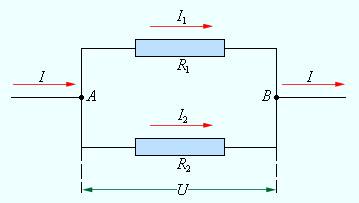
Baby 1.8.2.
In parallel, the appointment of conductors.
Suma strum I1 + I2, which flow through the wound conductors, dovnyu strum in the ungalvanized lance:
This result is evident from the fact that at the points of depletion of the strum (nodes A and B) in the lances of the constant strum, charges cannot accumulate. For example, to the node A in an hour Δt, the charge IΔt is charged, and the charge I1Δt + I2Δt is charged to the node A in the same hour. Otzhe,
Recording on the basis of Ohm's law:
![]()
de R - electrical opir of the whole lance, it is necessary:
With a parallel connection of conductors, the value that is the turning support of the lansyug is equal to the sum of the values that turn the supports parallel to the inclusion of conductors.
Tsey result is fair for any number of parallel inclusions of conductors.
The formulas for the last and parallel connection of the conductors allow, in different cases, to develop the support of a folding lancet, which is formed from a large number of resistors. On fig. 1.8.3 the butt of such a folding lancet is pointed and the sequence of calculation is indicated.
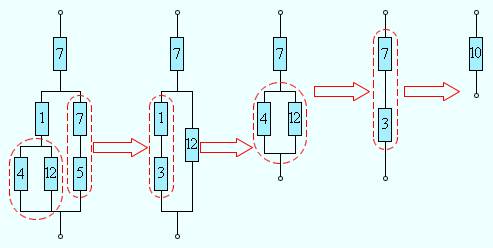
Baby 1.8.3.
Rozrahunok support folding stake. Opir of all conductors is indicated in ohms (Ohm)
It should be noted that far from all folding lances, which are formed from conductors with different supports, can be developed for additional formulas for the last and parallel connection. On fig. 1.8.4 the butt of an electric lancet is pointed, which cannot be opened with any other method.

Baby 1.8.4.
The butt of an electric lancet, which does not start up to a combination of successively and parallel wires
Lesson #36-169 Call of conductors. Ohm's law for a repeated call. Electrodestructive force. D/z: 8.6; clause 8.7; clause 8.9
1. Call of conductors.
1.1 Last - z'ednannya, when the front conductor is thrownwith the beginning of the offensive.
At the last call: I 1 = I 2 (as a stable strum, then in an hour t, through some kind of conductor cut-off, the same charges flow)
U = U 1 + U 2 (The work of electrostatic forces when a single charge is moved along the plots 1 and 2 more works on these plots).
An equivalent conductor (opir) is a conductor that replaces a group of conductors (opir) without changing the strum and voltage on the space of the lansyug.
For Ohm's law: U
=
IR
,
tobto. U 1 = IR 1; U 2 = IR 2;  IR \u003d IR 1 +IR 2 \u003d I (R 1 +R 2 ) , then R=R
1
+R
2
otherwise R=
IR \u003d IR 1 +IR 2 \u003d I (R 1 +R 2 ) , then R=R
1
+R
2
otherwise R= 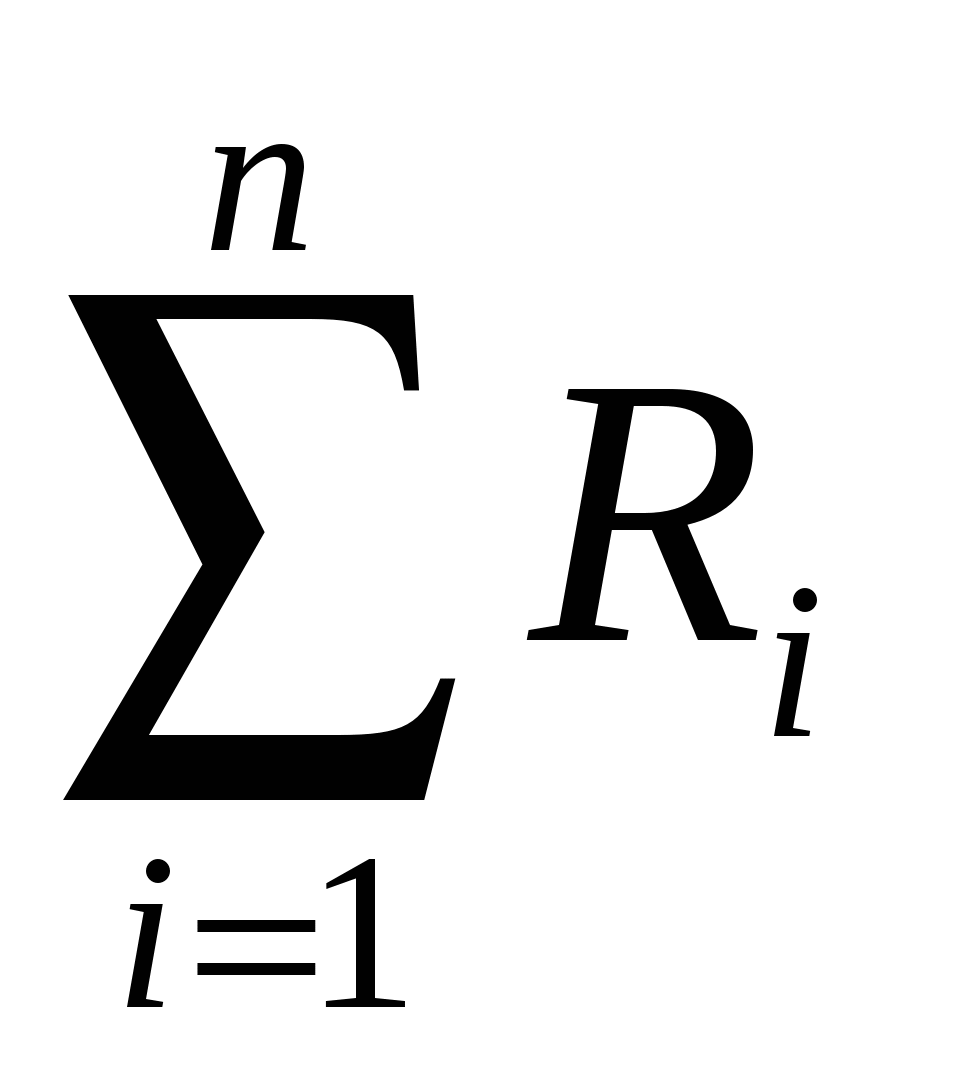
Okremy vipadok: R = nR ,
In the case of the last match, the equivalent opir of allthe lancer is more expensive than the sum of supports for the okremih litter of the lancer. Oskilki I 1 = I 2; I 1 =  ; I 2 =
; I 2 = 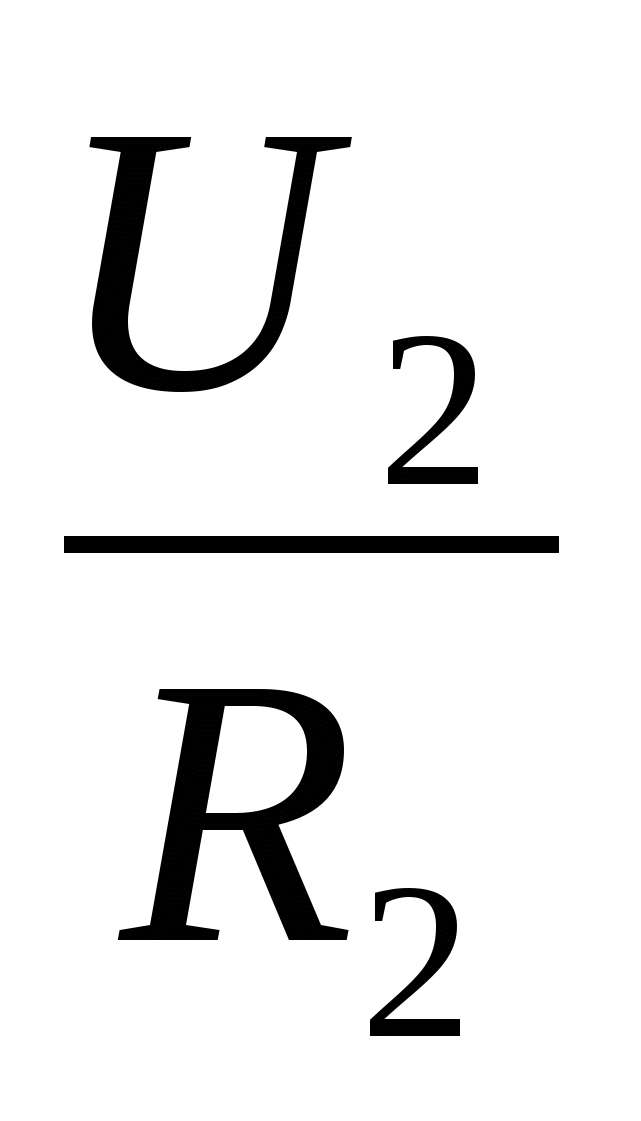 ; then U 1 \u003d I 1 R 1 and U 2 \u003d I 2 R 2 later,
; then U 1 \u003d I 1 R 1 and U 2 \u003d I 2 R 2 later,  =
=
In the case of the last connection of the conductors, the voltage, which is on the conductors, is directly proportional to their supports.
Nedolik: when the lancer rises in one of the successive days, the strum is known throughout the whole lance (in practice, it is not handy).
1.2 Parallel - z'ednannya, for some cob of conductors, they go to one vuzol, and kіntsi - to another.
 U \u003d U 1 \u003d U 2; I \u003d I 1 \u003d I 2
U \u003d U 1 \u003d U 2; I \u003d I 1 \u003d I 2  I=
I=  I 1
=
I 1
= ; I 2
=
; I 2
=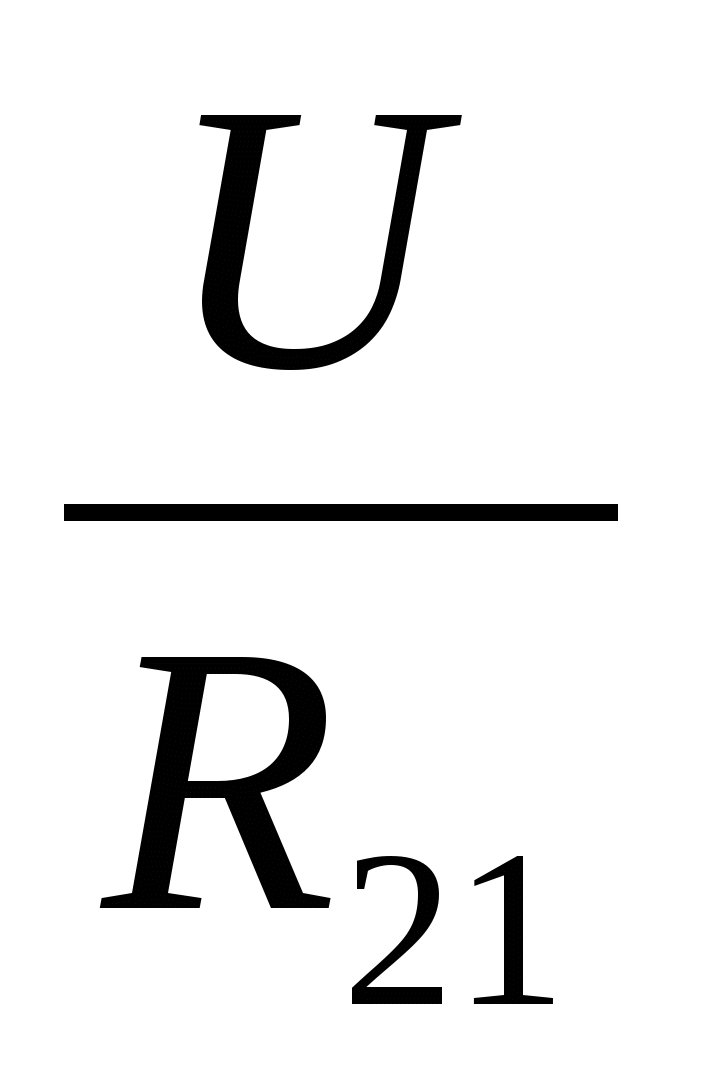 ,
tobto =
,
tobto =  +
+
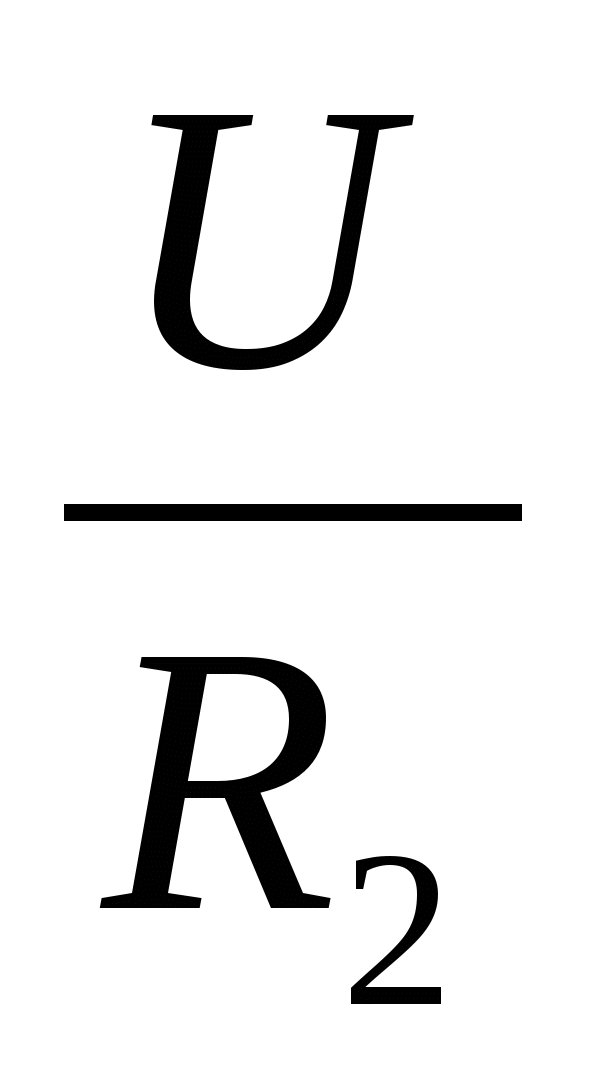
 =
=
 +
+
 or =
or =  ; q = q 1 + q 2
; q = q 1 + q 2
The conductivity of the entire opening (all at the same time in parallel with the conductors) is more than the sum of the conductors of okremikh lok (skin in parallel with the conductors).
Okremy vipadok: R 1 \u003d R 2 \u003d ... \u003d R n then R
=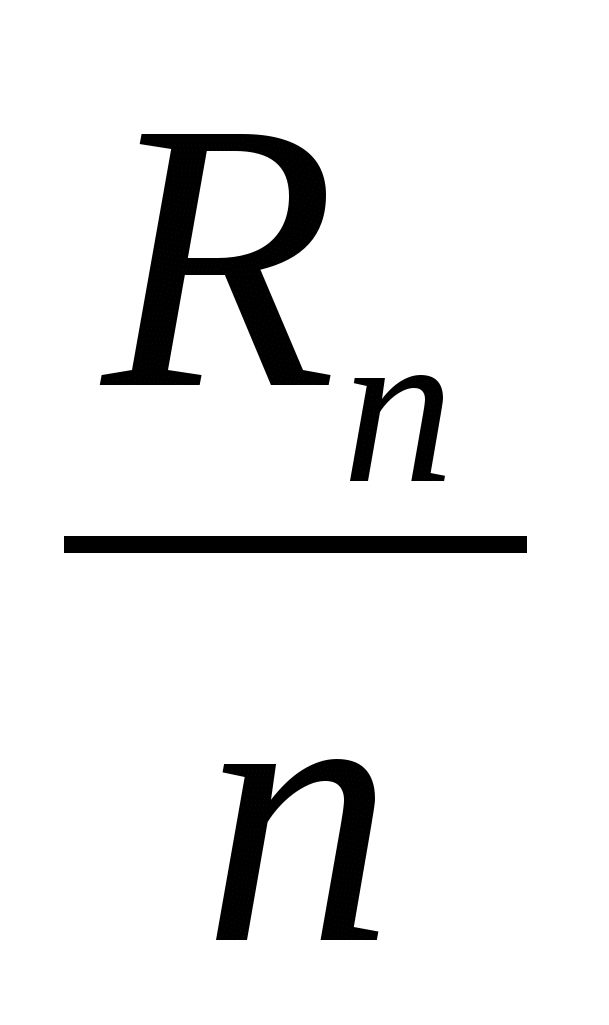 ,
de n is the number of conductors with the same support.
,
de n is the number of conductors with the same support.
Зі spіvvіdnoshen U 1 =U 2; U 1 = 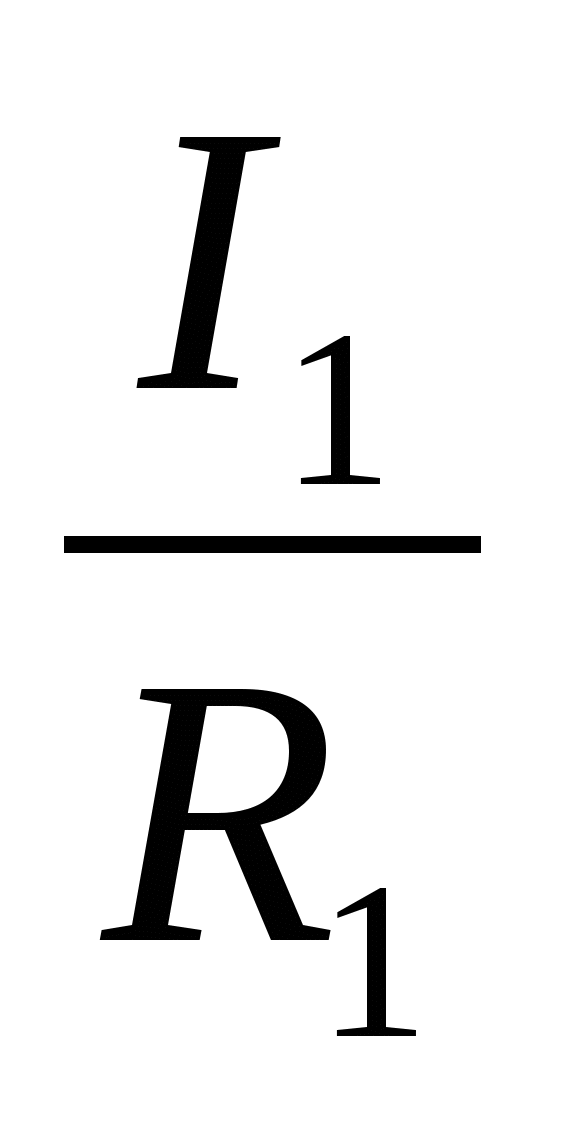 ; U 2 =
; U 2 =  screaming what
screaming what  =
=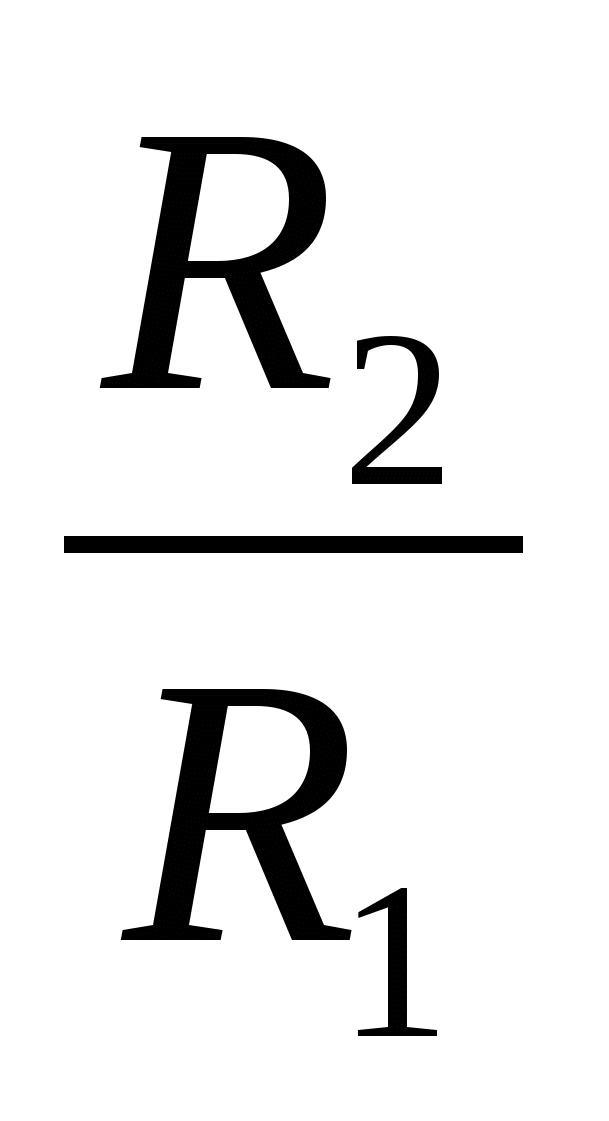 - with a parallel connection of the conductors, the strums at the poles are wrapped in proportion to their supports.
- with a parallel connection of the conductors, the strums at the poles are wrapped in proportion to their supports.
Perevaga: if the voltage between the knots is stagnant, then the strumi at the hilts cannot lie one type of one
2. Ohm's law for the full Lancug
Revenge the latest lansyug:
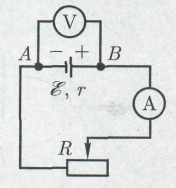 - zovnishnya dilyanka - spodzhivach struma, scho regulate, control and so on.
- zovnishnya dilyanka - spodzhivach struma, scho regulate, control and so on.
- vnutrishnya dilyanka - Dzherelo Struma s EDS ε and with an internal support g (opir, like a Volodya was dzherelo electric energy, to that є conductor, the strum saw warmth in it).
Look at the closures of the lance, which is formed from the outer part, which may opir R, that inner one - dzherela struma, opir of a city.
In accordance with the law of energy conservation, EPC dzherela struma more costly sum of voltage drops on
zvnіshny and vnutrіshnym dіlyanki lance, so as when moving along a closed lance, the charge rotates at the outer position - at the point with this very potential (tobto φ A \u003d φ B): ε = IR + Ir ,
de IR and Ir - voltage drop on the outer and inner yards of the lansyug. See Ohm's law for the complete lancer:
3.EPC The action of external forces is characterized by a physical quantity, as it is called an electrical disruptive force (EPS)
Electrical disruption force in a closed circuit is applied to the work of third-party forces when the charge is moved to the circuit before the charge: ε= 
Yakshto on batteries1.5 V is written, then it means what external forces (хіnot in this case) zdіyyuyut work 1.5 J at displaced charge in 1 C one battery poles to the next. A permanent strum cannot be used in the castle nutty lansyug, like in the new dіyut outside forces, so there is no EPC.
EPC, like the power of the struma, is an algebraic quantity. How does EPC spray positive charges on
 Conversely, it is considered positive (ε > 0). If the EPC crosses the range of positive charges from the chosen one directly, it is taken into account by the negative one (ε
Conversely, it is considered positive (ε > 0). If the EPC crosses the range of positive charges from the chosen one directly, it is taken into account by the negative one (ε
Keep in mind that with the formula you can speed up only once, if the strum is in the middle of the dzherel from the negative pole to the positive, then the same as in the outer lansyug - from the positive to the negative.
3. Z'ednannya dzherel electric energy from the battery.
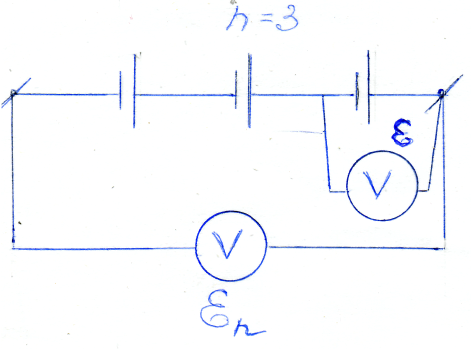 3
3 .one. The last day. The "+" pole of the front dzherel goes back to the "-" of the forward pole. Ohm's law for the whole lance for the last day. I=
.one. The last day. The "+" pole of the front dzherel goes back to the "-" of the forward pole. Ohm's law for the whole lance for the last day. I= 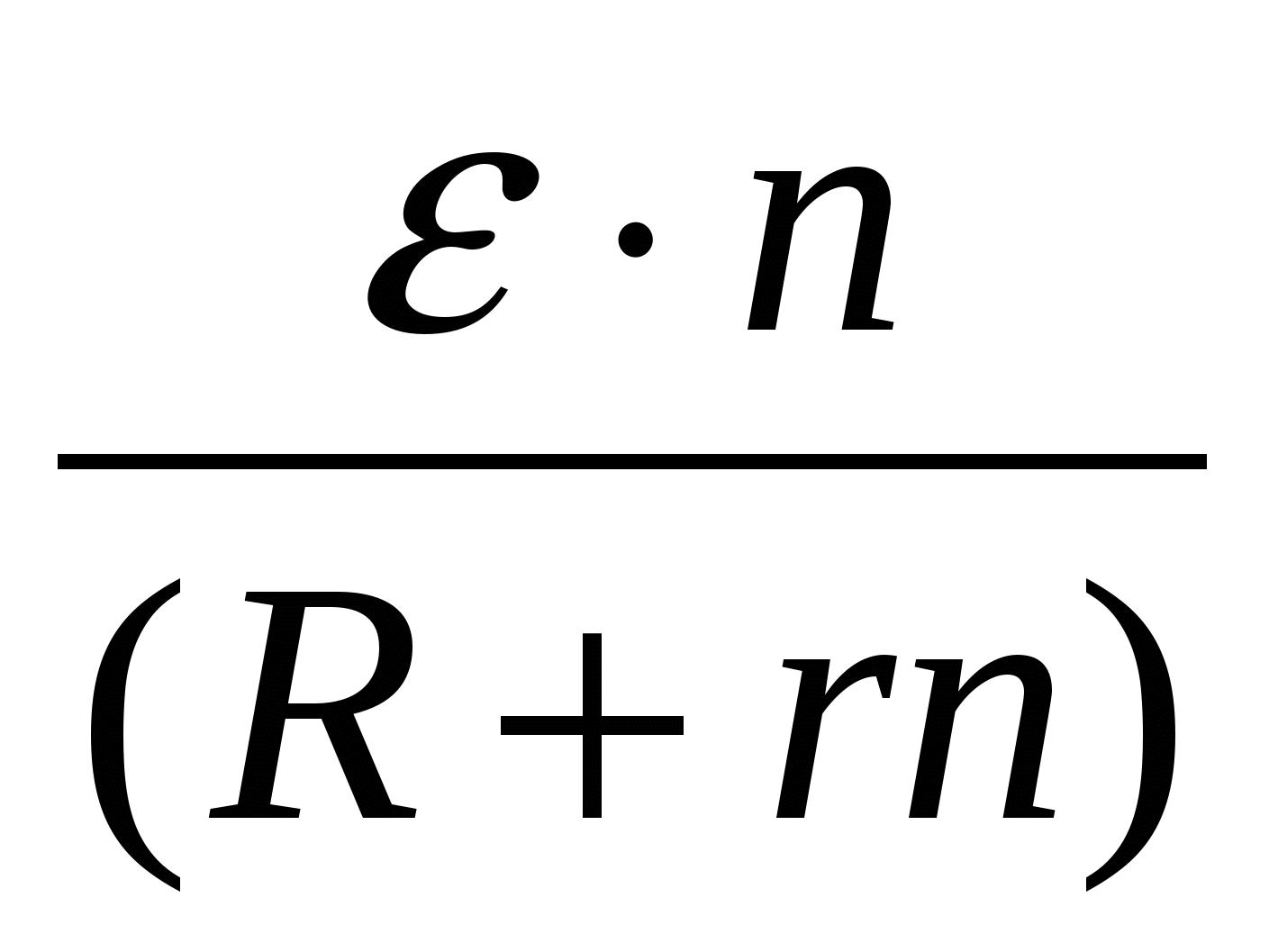
3.2. Parallel to the day. "+" pole connect to one terminal,
and the "-" pole - to the last. Ohm's law for the entire Lanzug with parallel
![]() inquiries: I=
inquiries: I= 
3.3 Refunds. Ohm's law for the whole lanzug with a mixed order:
I= 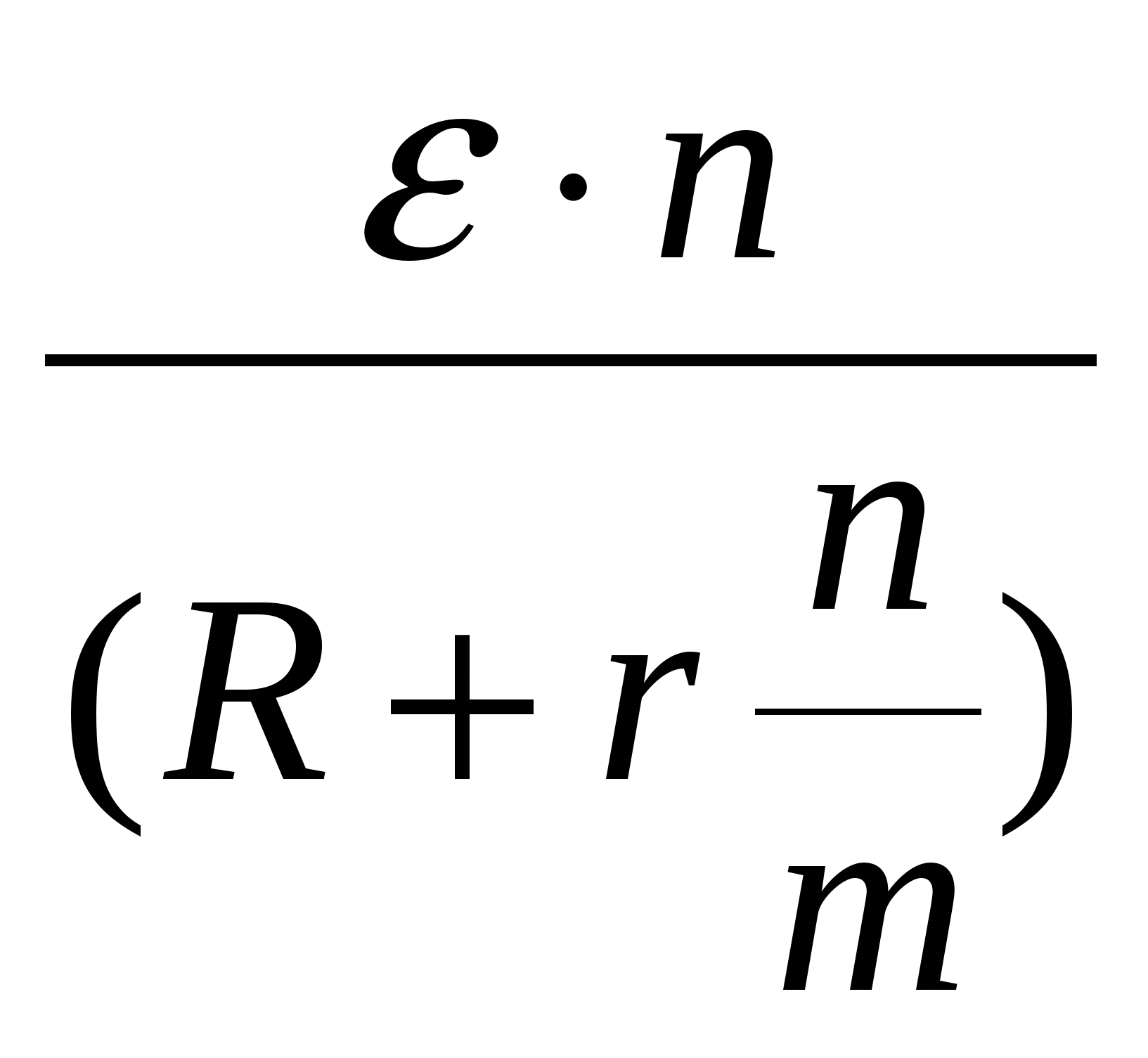
 Exam nutrition
Exam nutrition
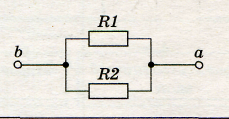 A. 1.2 ohm B. 5.2 ohm C. 5 ohm
A. 1.2 ohm B. 5.2 ohm C. 5 ohm
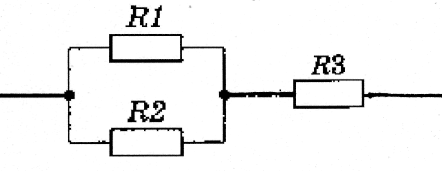 A. 1.2 ohm B. 5.2 ohm C. 5 ohm
A. 1.2 ohm B. 5.2 ohm C. 5 ohm
yakscho R 1 = 2 ohms, R 2 = 3 ohms, R 3 = 4 ohms A. 1.2 ohm B. 5.2 ohm C. 5 ohm
31. What physical value is assigned to the robotic settings, which is controlled by external forces when the charge q moves along the entire closed electric path, up to the value of the charge?
A. Strumu power. B. Voltage. B. Electrical Opir. G. Pitomy electric opir. D. Electrical power.
32. How can one deduce Ohm's law for a complete Lanciug by pointing the formulas below?
BUT.I =
; B.I =
 ; Art.IUΔt; R.P=
UI; D.ρ
=
ρ
0
(1+αt).
; Art.IUΔt; R.P=
UI; D.ρ
=
ρ
0
(1+αt).
33. Dzherelo strumu with EPC May 18 internal opir 30 Ohm. What is the value of the power of the struma when connected to the resistor with an electric support of 60 Ohm?A. 0.6 A. B. 0.3 A. C. 0.2 A. G. 0.9 A. D. 0.4 A.
manager
№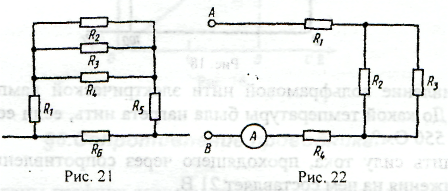 1. Galvanic element with EPC 5.0 V and an internal support equal to 0.2 Ohm short circuits to the conductor with a support of 40.0 Ohm. Why is the voltage U
on which conductor?
1. Galvanic element with EPC 5.0 V and an internal support equal to 0.2 Ohm short circuits to the conductor with a support of 40.0 Ohm. Why is the voltage U
on which conductor?
№ 2 At the measure with voltage 220 lampi
support 200 Ohm skin. Measure the strength of the struma through the skin lamp.
№ 3 Know the wild opir of the delyanka of the lansyug, depicted as a baby,
yakscho R 1 = 20 ohms, R 2 = R. 3 = R 4 = 15 ohms, R 5 = 3 ohms, R 6 = 90 ohms.
№ 4. Chotiri resistors of 60 ohm leather are given. Cross circuits of all four resistors, so that the main opir is shown equally: 15, 45, 60, 80, 150 and 240 ohms. For the skin scheme, write a rozrahunok on the opposite side.
№ 5. EPC electric power supply 100 V. With an external support of 49 Ohm, the power of the strum in the lance
2 A. Find the voltage drop in the middle of the dzherel and yogo internal opir.
№ 6. The difference in potentials on the terminals of the open-ended strumu dzherel 4 V. Designate the internal opir of the strumu dzherel, just as when supporting the outer yard of the lansyug 4 Ohm, the struma strength is 0.8 A.
№ 7. Dzherelo struma with EPC 220 V and internal support 2 ohm closure conductor support 108 ohm. Indicate the drop in the voltage at the middle of the struma.
№ 8. Designate the EPC and the internal support to the struma, so with an external support of 3.9 Ohm, the struma strength in the lance is more than 0.5 A, and with an outside support of 1.9 Ohm, the struma strength is more than 1 A.
№ 9. Calculate the strength of the struma with a short-circuited battery from EPC 12 V, as well as with a short-circuited її on the external support of 4 Ohm, the strength of the struma in the lance is more than 2 А. have the largest strum?
№ 10. EPC dzherela struma door 220 V, internal opir 1.5 Ohm. What is the need to take the opir of the old lantsyug’s village, so that the strength of the struma would increase 4 A?
Ohm's law for the lantsug's lot: struma powerI on the station of the electric lance directly proportional to the pressureU on the ends of the dіlyanka and wrapped in a proportional yogo support R.
Law formula:
I
=. Write down formulas U
=
IR
і R=
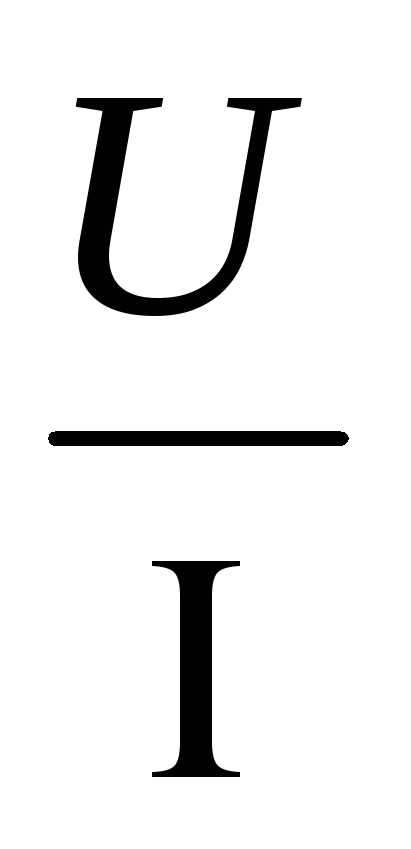 .
.
 Fig.1. Dіlyanka lansyuga
Fig.1. Dіlyanka lansyuga  Fig.2. Povny lanciug
Fig.2. Povny lanciug
Ohm's law for the full lanceg: struma powerI
new electric lance expensive EPC (electrodestructive force) dzherela strumu E, subdivided into the latest opir lanceug (R+r). The latest support of the lancer is more expensive than the sum of supports of the old lancer R and internal r jerela struma. formula to the law I=
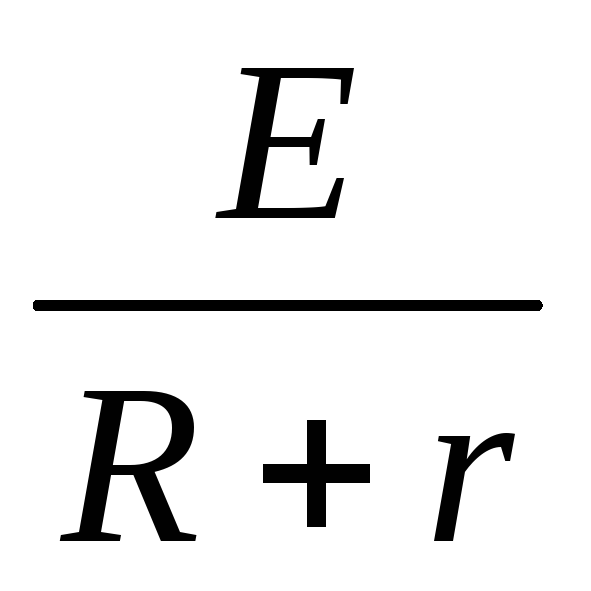 .
On fig. 1 and 2 induction schemes of electrical lances.
.
On fig. 1 and 2 induction schemes of electrical lances.
3. After that parallel meeting of conductors
Conductors in electric lancers can call successivelyі in parallel. Zmіshane z'єdnannya poєdnuє insults tsі spoluki.
Opir, with the inclusion of any substitute for all other conductors, which are between two points of the lancet, the strum and the voltage are immutable, called equivalent support tsikh conductors.
Last day
The last one is the day, when the skin guide is less likely to walk behind one forward and one forward guide.
Yak yells from the first Kirchhoff's rules, With the last connection of conductors, the power of the electric stream, which flows through all conductors, is the same (on the basis of the law of conservation of charge).
1. At the last call conductors(Fig. 1) the strength of the struma is the same for all conductors:I 1 = I 2 = I 3 = I
 Rice. 1. After the appointment of two conductors.
Rice. 1. After the appointment of two conductors.
2. Vіdpovidno to Ohm's law, voltage U 1 і U 2 on conductors equal U 1 = IR 1 , U 2 = IR 2 , U 3 = IR 3 .
The voltage at the last load of the conductors is more than the sum of the voltages on the last lines (conductors) of the electric lance.
U = u1 + u2 + u3
Ohm's law, voltage U 1, U 2 on the river conductors U 1 = IR 1 , U 2 = IR 2 , Vіdpovіdno to another rule of Kirchhoff, the voltage on the entire distance:
U = U 1 + U 2 = IR 1 + IR 2 = I(R 1 + R 2 )= I R. We take:R = R 1 + R 2
Hot voltageU on the conductors, the amount of voltage is higherU 1 , U 2 , U 3 one:U = U 1 + U 2 + U 3 = I · (R 1 + R 2 + R 3 ) = IR
deR CEV – equivalent opir of the whole lancer. Zvіdsi: R CEV = R 1 + R 2 + R 3
In the case of the last order, the equivalent support of the lancer is more expensive than the sum of the supports of the okrem plots of the lancer :R CEV = R 1 + R 2 + R 3 +…
Tsey result is fair for whatever number in sequence
From the law of Omaslid: with the equality of the forces of the strum during the last z'ednanny:
I
=
 ,
I
=
,
I
=
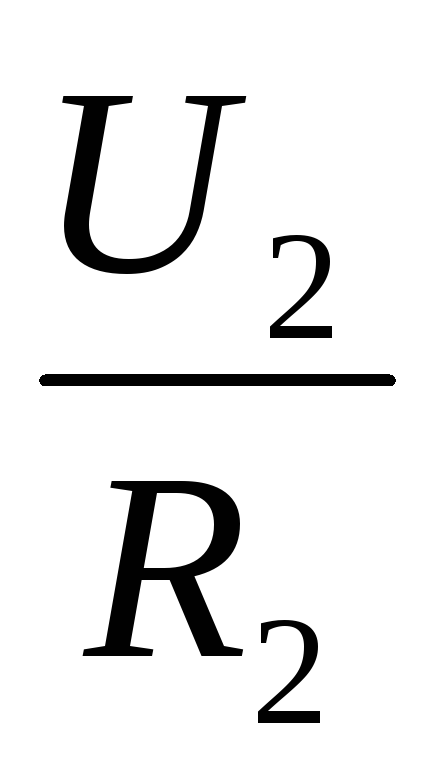 . Zvіdsi
. Zvіdsi
 =
=
 or
or
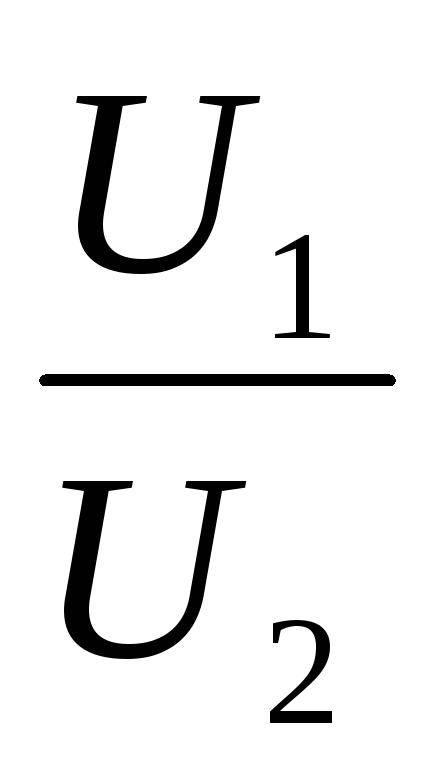 =
= , i.e., the voltages on the okremy poles of the lancet are directly proportional to the supports of the yards.
, i.e., the voltages on the okremy poles of the lancet are directly proportional to the supports of the yards.
At the last call n same conductors hot voltage one boost of the voltage of one U 1 for their number n:
U PISLYA = n · U 1 . Similarly for supports : R PISLYA = n · R 1
When roaming the lance of one of the successive successive strums, the whole lance is known, that last bell is practically not wound up.


